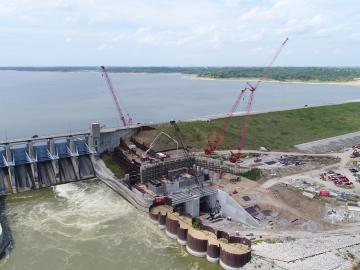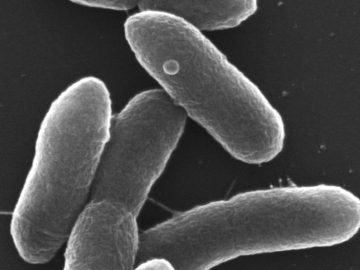
Filter News
Area of Research
- (-) Biology and Soft Matter (1)
- (-) Energy Science (75)
- (-) National Security (24)
- Advanced Manufacturing (2)
- Biology and Environment (63)
- Computational Engineering (2)
- Computer Science (10)
- Electricity and Smart Grid (3)
- Functional Materials for Energy (1)
- Fusion and Fission (9)
- Fusion Energy (7)
- Isotopes (1)
- Materials (55)
- Materials for Computing (3)
- Mathematics (1)
- Neutron Science (21)
- Nuclear Science and Technology (13)
- Nuclear Systems Modeling, Simulation and Validation (1)
- Quantum information Science (9)
- Sensors and Controls (1)
- Supercomputing (81)
News Topics
- (-) Advanced Reactors (7)
- (-) Biotechnology (5)
- (-) Exascale Computing (2)
- (-) Grid (43)
- (-) Machine Learning (18)
- (-) Physics (2)
- (-) Quantum Science (3)
- 3-D Printing/Advanced Manufacturing (81)
- Artificial Intelligence (19)
- Big Data (11)
- Bioenergy (28)
- Biology (14)
- Biomedical (7)
- Buildings (38)
- Chemical Sciences (15)
- Clean Water (8)
- Composites (17)
- Computer Science (41)
- Coronavirus (14)
- Critical Materials (9)
- Cybersecurity (25)
- Energy Storage (71)
- Environment (60)
- Fossil Energy (2)
- Frontier (2)
- Fusion (2)
- High-Performance Computing (10)
- Hydropower (3)
- Isotopes (1)
- Materials (36)
- Materials Science (29)
- Mathematics (2)
- Mercury (3)
- Microelectronics (1)
- Microscopy (8)
- Molten Salt (1)
- Nanotechnology (9)
- National Security (37)
- Neutron Science (15)
- Nuclear Energy (11)
- Partnerships (16)
- Polymers (11)
- Security (15)
- Simulation (4)
- Space Exploration (3)
- Statistics (1)
- Summit (6)
- Transportation (68)
Media Contacts

A method developed at Oak Ridge National Laboratory to print high-fidelity, passive sensors for energy applications can reduce the cost of monitoring critical power grid assets.

A new Department of Energy report produced by Oak Ridge National Laboratory details national and international trends in hydropower, including the role waterpower plays in enhancing the flexibility and resilience of the power grid.

A new tool from Oak Ridge National Laboratory can help planners, emergency responders and scientists visualize how flood waters will spread for any scenario and terrain.

Six scientists at the Department of Energy’s Oak Ridge National Laboratory were named Battelle Distinguished Inventors, in recognition of obtaining 14 or more patents during their careers at the lab.

Planning for a digitized, sustainable smart power grid is a challenge to which Suman Debnath is using not only his own applied mathematics expertise, but also the wider communal knowledge made possible by his revival of a local chapter of the IEEE professional society.

The Transformational Challenge Reactor, or TCR, a microreactor built using 3D printing and other new advanced technologies, could be operational by 2024.

ORNL scientists have modified a single microbe to simultaneously digest five of the most abundant components of lignocellulosic biomass, a big step forward in the development of a cost-effective biochemical conversion process to turn plants into

Oak Ridge National Laboratory researchers have developed artificial intelligence software for powder bed 3D printers that assesses the quality of parts in real time, without the need for expensive characterization equipment.

Oak Ridge National Laboratory researchers have developed a machine learning model that could help predict the impact pandemics such as COVID-19 have on fuel demand in the United States.

Oak Ridge National Laboratory scientists evaluating northern peatland responses to environmental change recorded extraordinary fine-root growth with increasing temperatures, indicating that this previously hidden belowground mechanism may play an important role in how carbon-rich peatlands respond to warming.


